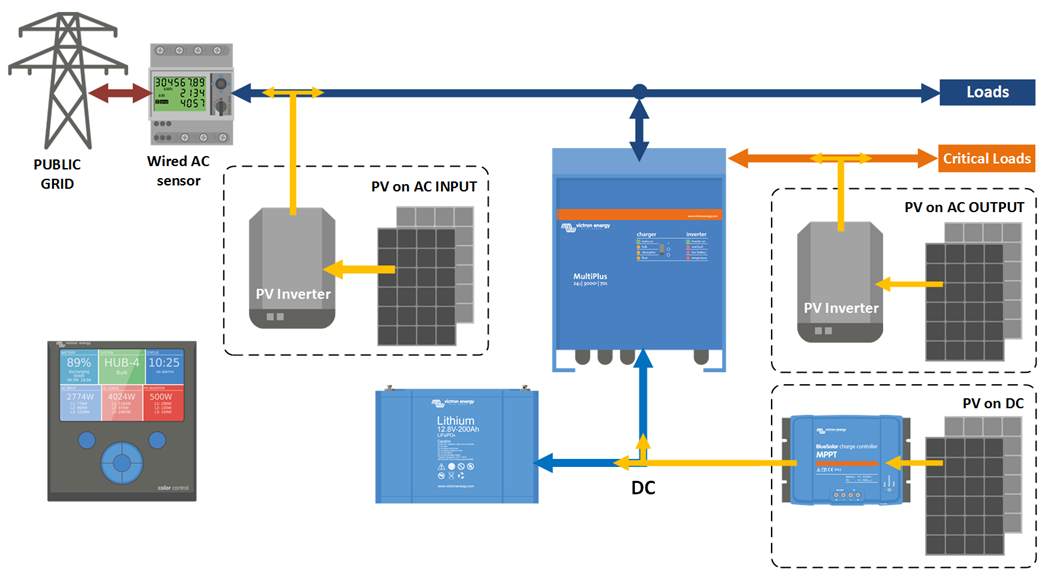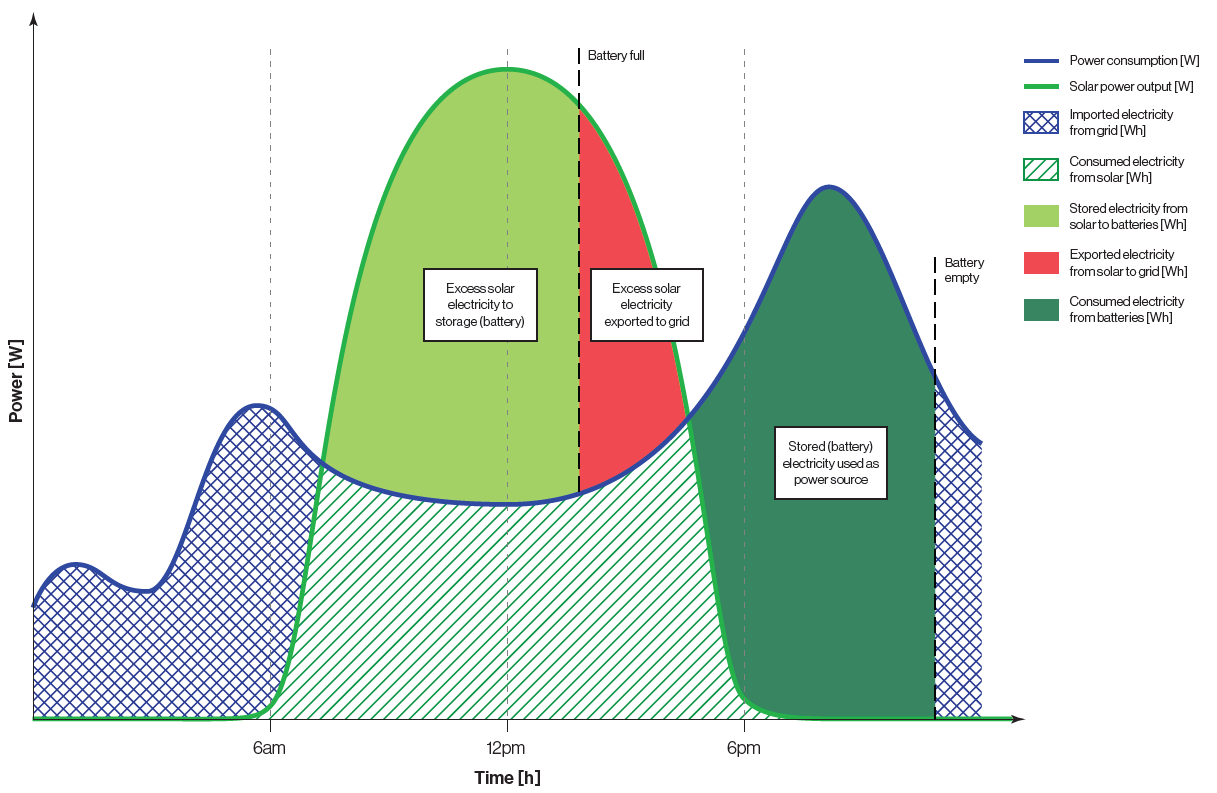14 Mar 2022
Victron Grid-Tie Energy Storage Systems
Introduction
This Tech Talk is a description of the Victron grid-tie Energy Storage System's operation. It covers the application of the ESS with optimizing self-consumption and analysis of power graph for a typical domestic installation.
Disclaimer: It is assumed that the reader has basic understanding of Energy Storage Systems, as well as PV inverters and grid-tie installations.
List of Acronyms:
- ESS: Energy Storage System
- PV: Photovoltaic
- MPPT: Maximum power point tracking device
- AC: Alternating current
- DC: Direct current
What is an ESS?
An Energy Storage System is the integration of different power sources (usually grid, solar and batteries) in a dynamic way in order to efficiently provide energy to the load.
What is a grid-tie system?
A grid-tie system is an ESS that interact with the grid in an active way. The ESS imports power from the grid when its energy consumption is higher than its production; and exports power back to the grid when its energy production is higher than its consumption.
What is optimizing self-consumption mode?
An ESS working in optimizing self-consumption mode assumes the following order of operation.
ESS as exporter (solar power >= load):
- Maximum solar power to the load.
- If excess, solar power to the battery system.
- If excess, solar power to the grid.
ESS as importer (load >= solar power):
- Maximum solar power to the load.
- If required, battery power to the load.
- If required, grid power to the load.
Different types of ESS
There are multiple types of ESS depending on where the PV inverters and MPPT are located in the system.
For a Victron ESS grid-tie system, at least one PV inverter has to be connected to the grid (1). The installation can also have a combination of a second PV inverter on the AC output (load) side and/or a MPPT on the DC battery side.
The image below shows the all-together combination.

(1) At the moment of publishing this article, Victron inverter/charger devices are not allowed to feed power back to the grid. That is why Victron ESS requires at least one PV inverter connected to the AC grid.
ESS – Power analysis graph
Below, it is shown the power graph of the ES system in a typical household.

The power analysis is as follow. During night-time the power consumption of the house remains minimum until around 6am when the family starts getting up. At that point there is solar production but it is still below the power consumption. Therefore, the electricity is imported from the grid.
During the day, the power consumption drops and remains stable due to the work and school routine of all family members. Between 7am and 1pm the solar production is higher than the load consumption, and the excess power is stored in a battery bank. At 1pm approximately, the batteries are full and now the excess power can be exported back to the grid. This trend continues until 5pm when the solar production falls below the power consumption of the house.
At this point, the power consumption rises considerably when family members start coming back home. Between 5pm and 10pm, the electricity provided to the load comes from the battery bank. At around 10pm, the battery bank is completely discharged, and from now and on, the electricity for the house is imported from the grid.
Conclusion
This Tech Talk is just an example of an ES system. All the parameters were estimated and have to be used as reference only.
Depending on the load profile of the installation, different types of ESS can be implemented. For a more in-depth analysis of various models of ESS, please refer to our next Tech Talk on this subject.
Gerardo Chiban